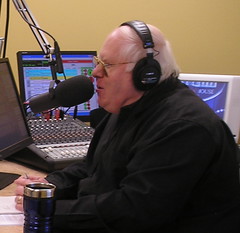Tuesday, January 23, 2007
What the President won't say
Even though this is a political impossability south of Mason-Dixon, here goes anyway.
Executive Summary Public Transportation Reduces U.S. Foreign Oil Dependence
Using conservative assumptions, the study found that current public transportation usage reduces U.S. gasoline consumption by 1.4 billion gallons each year. In concrete terms, that means:
• 108 million fewer cars filling up – almost 300,000 every day. 34 fewer supertankers leaving the Middle East – one every 11 days.
• Over 140,000 fewer tanker truck deliveries to service stations per year.
• A savings of 3.9 million gallons of gasoline per day.
• These savings result from the efficiency of carrying multiple passengers in each vehicle, the reduction in traffic congestion from fewer automobiles on the roads, and the varied sources of energy for public transportation.
Public transportation also saves energy by enabling land use patterns that create shorter travel distances, both for transit riders and drivers. We hope to estimate these savings in future research, but were not able to include them in this report.
Significant Household Savings
Households who use public transportation save a significant amount of money. A two-adult “public transportation household” saves an average $6,251 every year, compared to an equivalent household with two cars and no access to public transportationservice. We define “public transportation household” as a household located within 3⁄4 mile of public transportation, with two adults and one car. To put these household savings in perspective, we compared them to other household expenditures:
• The average U.S. household spent $5,781 on food in 2004.
• The average U.S. homeowner with a mortgage spent $6,848 on mortgage interest and fees in 2004, and paid off $3,925 in mortgage principal.
Public Transportation and Petroleum Savings in the U.S.
These savings are attributable to three factors:
• Driving less. The average household in which at least one member uses public transportation on a given day drives 16 fewer miles per day compared to a household with similar income, residential location and vehicle ownership that do not use public transit – a savings of hundreds of dollars a year.
• Walking more. The 2001 National Household Transportation Survey reveals that households living near public transportation facilities tend to drive less in general,
independent of their own public transportation use. That is because these areas tend to have characteristics allowing people to walk more, drive shorter distances when they do drive, and walk between destinations such as stores and workplaces.
• Owning fewer cars. The American Automobile Association (AAA) estimated the annual average cost of operating a vehicle in 2006 was $5,586, including vehicle depreciation, insurance, finance fees and standard maintenance.
Expanding Public Transportation Would Double Petroleum Savings
The dramatic increase in ridership over the past decade demonstrates Americans’ clear desire for more public transportation options. So what would happen if public transportation services were expanded so that ridership doubled? Total national fuel savings from public transportation would double to 2.8 billion gallons per year, or more if improved coordination between land use plans and public transportation could replace even more car travel.
About the Study
“Public Transportation and Petroleum Savings in the U.S.: Reducing Dependence on Oil” was prepared by ICF International, a leading global consulting firm that since 1969 has worked with government and commercial clients, and specializes in the connection between transportation and energy. The study was commissioned by the American Public Transportation Association.
(APTA). APTA is a nonprofit international association of 1,500 member organizations including public transportation systems; planning, design, construction and finance firms; product and service providers; academic institutions; and state associations and departments of transportation. APTA members serve the public interest by providing safe, efficient and economical public transportation services and products. APTA members serve more than 90 percent of persons using public transportation in the United States and Canada.
<< Home

